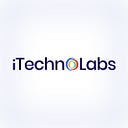Top 4 Features for Your Online Transportation App Like Moovit
Because of their convenience, portability, adaptability, and ease, mobile applications have quickly become ubiquitous. The transportation industry is also turning to high-tech solutions, such as apps, to deal with problems caused by humans. Logistics and transportation companies can benefit significantly from transportation app development because it increases efficiency and decreases overhead. The need for transportation apps is growing as logistics operations expand. The applications simplify administrative tasks and improve tracking, which ultimately contributes to increased profits for your company.
Checking the arrival or departure times of vehicles can be time-consuming. The Online Transportation App comes in handy for the logistics and transport industry, which relies heavily on inventories. It lessens the need for human intervention and saves the time and effort that would otherwise be spent keeping tabs on everything. The apps provide options for dealing with delivery verification issues.
It serves numerous benefits which can ease out business operations. It enhances driver productivity and facilitates performance monitoring for simple management. This article will discuss how to create a transportation app and what features should be included.
What Makes a Good Transportation App
The purpose of a public transportation app is to facilitate the use of a city’s various modes of public transportation. A transit app is like having an always-available personal assistant who is familiar with every nook and cranny of the city, can offer assistance with trip planning at any time, and can keep you apprised of service disruptions by monitoring the locations of individual vehicles.
The app’s purpose necessitates that it has both a straightforward interface and extensive features. A lot of work is involved for designers in front-end development, but the challenge of creating a backend is even more significant. A developer must connect it with various transportation networks, ridesharing services, payment gateways, and transaction networks.
Let’s dig deeper into what makes Moovit, a popular online transportation app, so helpful.
1. Maps
One of the fundamental features of any public transit app is a map detailing the various stops, lines, and roads served by the system in question. These tools can be used to implement this function:
Incorporation: With Google’s existing Maps platform, there’s no need to start from scratch. In addition to covering more than 200 countries and territories, the tech giant’s data covers 99 percent of the planet so that users can rely on accurate real-time location information.
Integration of APIs, which allow for the transfer of information between programs, is a crucial feature of Google Maps.
Here are some Application Programming Interfaces that programmers can use:
- The Android and iOS Maps SDKs incorporate Google Maps data into apps by making it possible to create and manage custom maps. The application programming interface (API) allows developers to connect to Google Maps servers, download data, display maps, and react to user actions on the maps. Developers can include a wide variety of graphical elements to enhance the presentation of maps and increase opportunities for user engagement. These can be ground or tile overlays, polygons, polylines (sets of line segments), or marker icons (icons indicating a location). The overlays follow the new geographic coordinates when the user pans or zooms the map.
- Simple, static maps can be embedded using the Maps Static API.
Engineers can now incorporate dynamic maps thanks to the Maps JavaScript API.
2. Schedules and routes with live updates on disruptions and vehicle location
Travel planning is greatly simplified with the help of transportation apps, which is especially helpful in unfamiliar environments. When using the app, customers typically enter their final destination (as the app sees it) and select a mode of transportation. But I’m curious as to the inner workings.
With the help of the General Transit Feed Specification (GTFS), transit agencies can easily create and distribute digital schedules (also known as feeds) to software developers. Transit data is shared in a General Transit Feed Specification (GTFS) format.
The most up-to-date transit info is available in the GTFS Realtime format. That’s a GTFS add-on built in collaboration between Google, several transit app developers, and the agencies that created Live Transit Updates. Providers use Live Transit Updates to communicate with app developers about the current location of their fleet. Since June 2011, the service has been available. Service alerts and real-time departure and arrival times at stations and stops are some data included in GTFS feeds. Feeds also provide information about the location and congestion of vehicles.
Developers, especially those working on an app that supports multiple destinations, are responsible for collecting and formatting data from hundreds to thousands of operators who provide transit services. In Adelaide, Australia, for instance, nine different transportation companies are available to the public. There are, fortunately, volunteer projects and businesses that compile data on public transportation from official sources.
Transit data from operators: You can get transit data directly from local public transport companies if your product is tailored to a particular city or area.
We also need ridesharing apps like Uber. Developers can access an API from Uber to incorporate the app’s features into their own.
Read more about Online Transportation App Like Moovit
